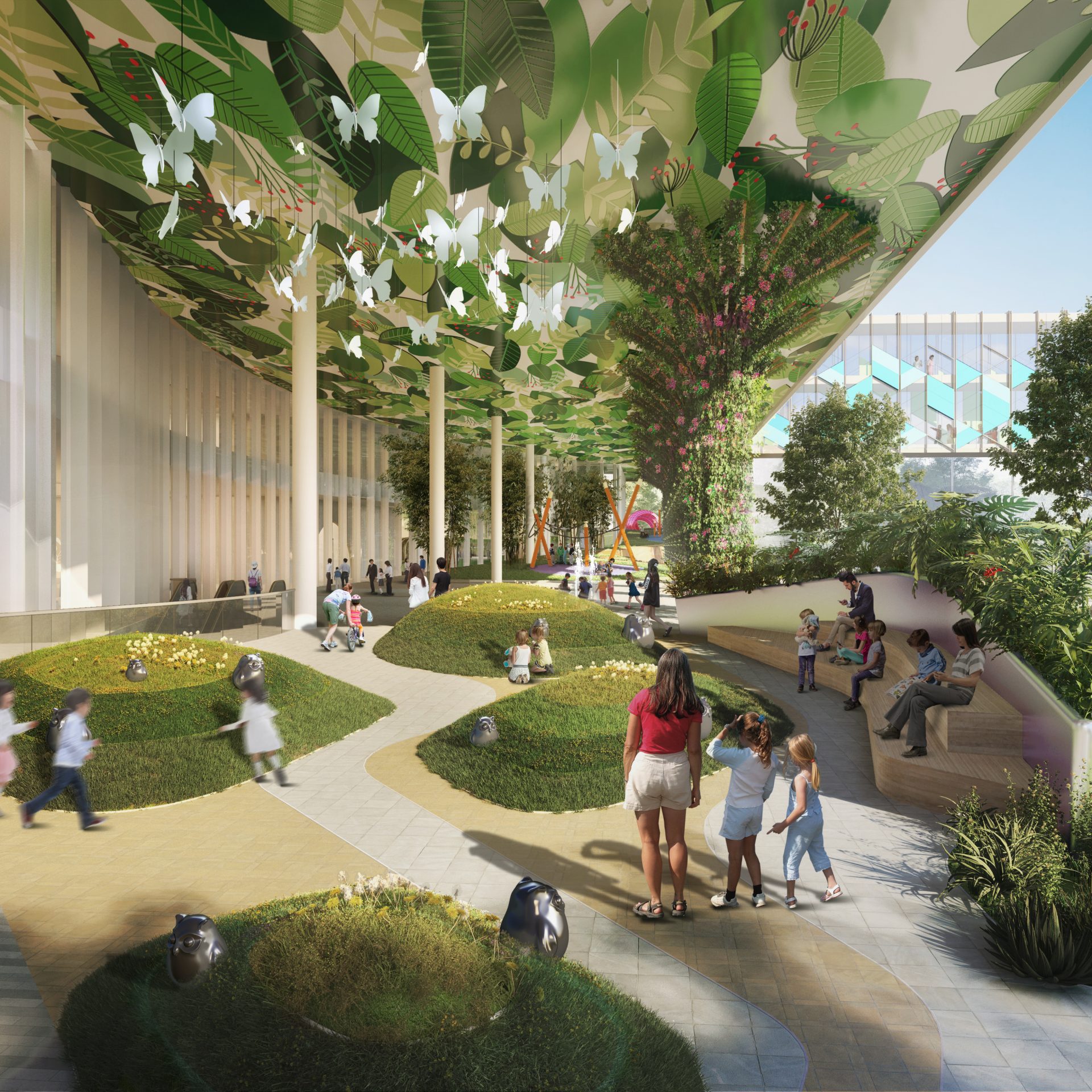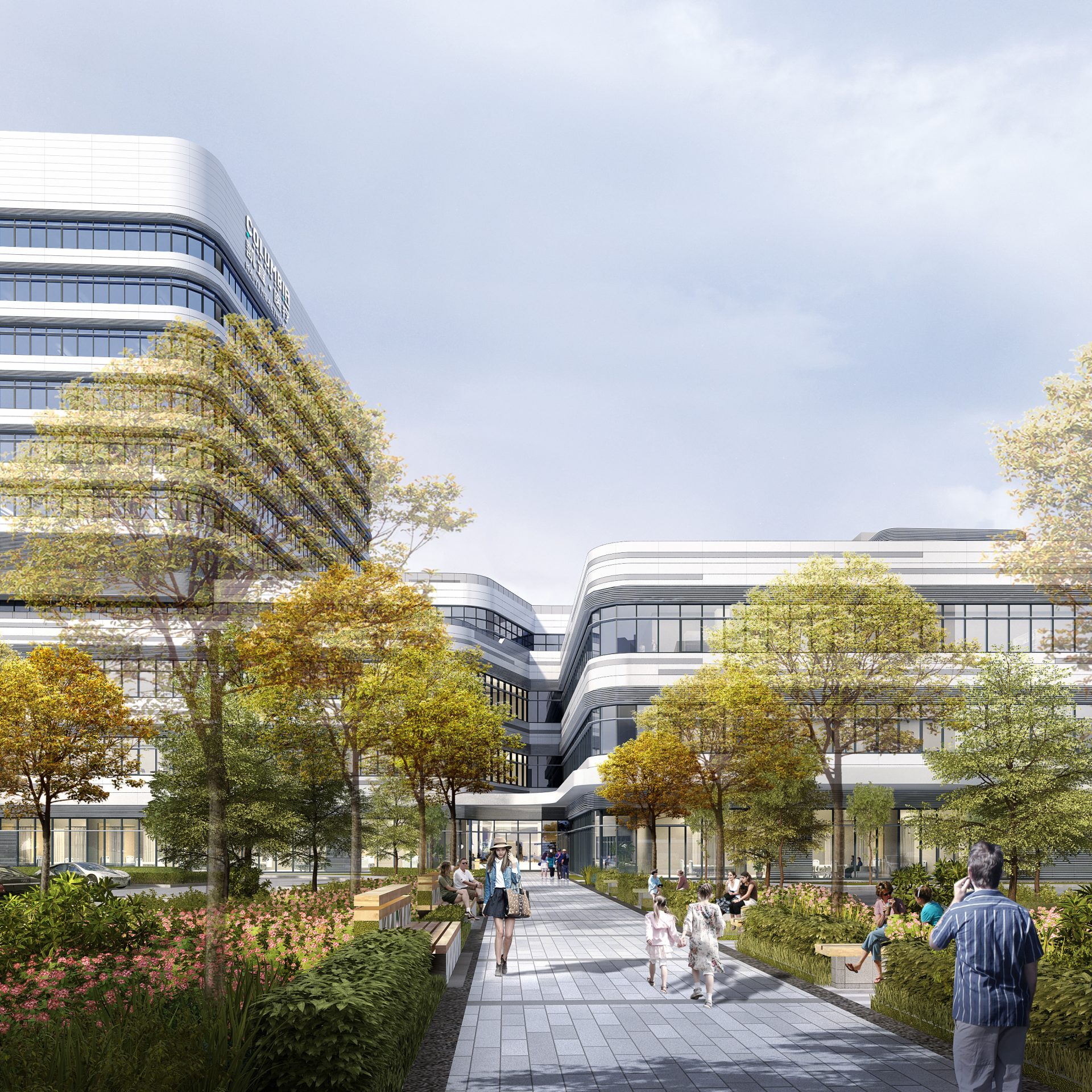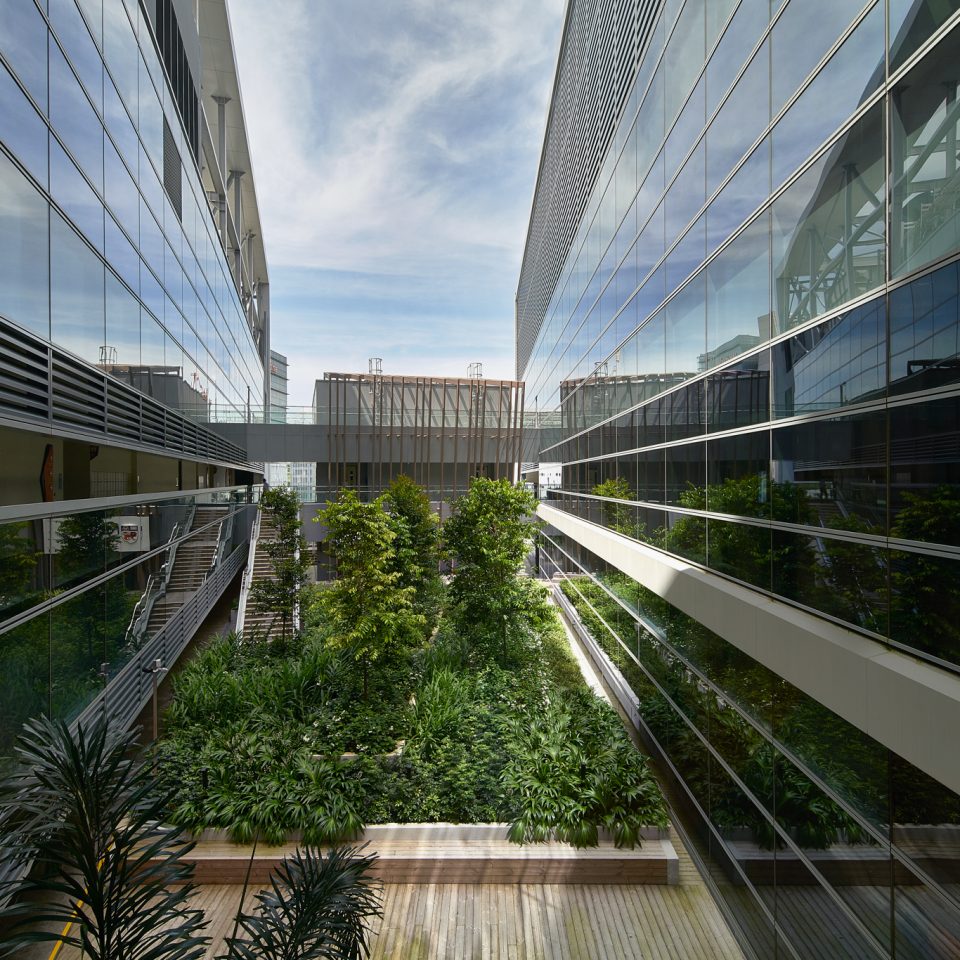The Design of Future Healthcare Facilities to Cope with Pandemics and Other Health Crises
Article originally appeared in:
Construction+ (Hong Kong edition)
2021 Q2 / Issue 23
Author: Stephanie Costelloe
Whilst COVID-19 has wreaked havoc on most countries, the global economy, social eco-systems and even mental wellbeing, the impact on healthcare from both a physical and systems perspective cannot be underestimated.
From a physical sense, hospitals struggled from the outset to cope with the sheer volume of patients who were affected by COVID-19, as most are simply not sized to accommodate such an overwhelming patient load. In many countries, this led to various attempts to help the system deal with the inevitable future patient volume – for example, the phrase ‘flatten the curve’ was coined in certain countries to help reduce the burden on hospitals by evenly spreading the number of patients over a longer period of time. However, even if there was enough physical space just to accommodate the patient numbers, there are many other issues in the design of our healthcare environments which impact the delivery of appropriate care to these patients.
Shenzhen Children’s Hospital & Science and Education Building
CHALLENGES OF PROVIDING CARE FOR COVID-19 PATIENTS IN CURRENT HOSPITAL ENVIRONMENTS
As a disease which attacks the respiratory system, large numbers of COVID-19 patients require mechanical ventilation, often for long periods of time. Many patients remain on ventilators for several weeks before they are well enough to be extubated. Intubated patients are typically cared for in an intensive care (ICU) or high- dependency environment which is specifically sized and equipped to deal with this level of high acuity care.
These rooms are larger than a typical patient room to allow for the additional equipment requirements such as multiple piped gas valves, other service outlets for connecting life-saving equipment, and ample space for close monitoring and care by staff. The number of ICU beds in a typical hospital is a relatively modest proportion of the overall bed number, which may suit the maximum patient load on most days of a typical year but is severely insufficient to deal with the patient surge or average length of intensive care presented by this crisis.

The integrated design approach with special emphasis on the integration of landscape design on the Shenzhen Children’s Hospital.
As a contagious disease that can spread through the air as well as through droplet and contact, patients should be cared for within an isolated environment with negative air pressure—meaning that the contaminated air in the room cannot pass to other spaces in the hospital. Much like ICU spaces, such a specialized air ventilation system is typically provided in a certain proportion of patient rooms within a hospital—this can range anywhere from 5 to 20 percent of rooms—rendering it impossible to accommodate all COVID-19 patients in such an environment and therefore increasing the risks of cross-contamination, most often to front-line workers who have suffered enormously during this time.
But the challenges extend beyond providing patient care. As hospitals have responded by converting every available space for patient care, staff areas are reduced to an absolute minimum whilst at the same time needing to accommodate complicated procedures for gown-up/down to prevent cross-contamination.
CREATIVE RESPONSES FROM ARCHITECTS TO HELP HOSPITALS DEAL WITH LIMITED SPACE AND PREVENT CONTAGION DURING THE COVID-19 OUTBREAK
In terms of permanent physical infrastructure, accommodating for future flexibility and adaptation is often the best response to designing healthcare environments in general, as they are so often susceptible to change even over a short space of time. Future advances in medical equipment, technological requirements, or the rare demands of crises such as this can almost never be predicted, so it is critical that architects plan and design healthcare spaces which have a high degree of adaptability and ‘updatability’ to enable either temporary or permanent changes to occur with ease (or at least with minimum disruption and cost).
Changi General Hospital
It is critical that architects plan and design healthcare spaces that have a high degree of adaptability and ‘updatability’ to enable either temporary or permanent changes to occur with minimum disruption and cost.
There is a misconception that such flexibility in design must come at high cost or compromise to the ‘base’ design solution. In practice, it can be as simple as the considered placement of corridor doors which would enable a department to be compartmentalized into smaller sub-units during a pandemic, or the provision of rooms with a ‘soft’ function which can be re-purposed for staff gown-up/down at building or department entries to suit adjusted decontamination requirements during a pandemic.
But this crisis has also seen the industry deploying their skills beyond traditional bricks and mortar solutions. As architects and designers, we are fortunate to have the ability to visualize things that don’t yet exist whilst bringing an important practicality and clarity to complex issues. This has enabled many architects and designers around the world to quickly take action in the ongoing fight against COVID-19. Examples range from the conversion of shipping containers into fully-functioning ICU pods, patient self-screening booths which limit the exposure of healthcare staff whilst allowing for effective triage, and the overnight conversion of spaces ranging from airports and hotels to convention centres and sports stadiums into temporary hospitals for COVID-19 patients or, more recently, vaccination Sin’ for the wider population.
CHANGES IN HOSPITAL DESIGN IN THE FUTURE AFTER THE COVID-19 PANDEMIC
It goes without saying that the harsh reality of pandemics and other outlier events will be front and centre in discussions about hospital design in future, be that in the construction of new hospitals, or renovation and conversion works to existing buildings. ‘Pandemic mode’ will no longer be an optional ‘luxury’ to be considered during the design process, it will be a compulsory way of thinking about how the hospital can quickly convert, physically as well as operationally.
Flexibility in hospital design will remain the key to mitigating the impact of such unpredictable events which will each present their own particular challenges. However, considering the potential magnitude of such crises, changes to the physical design of hospital environments alone will be insufficient – this flexibility will need to extend to multiple building typologies to improve our response if such an event like this should occur again.

Columbia Jiaxing Hospital
‘Pandemic mode’ will be a compulsory way of thinking about how the hospital can quickly convert, physically as well as operationally.
Consider the difference in handling this crisis if other building typologies already had the capacity to be speedily converted to support our hospitals dealing with the most serious cases— sports stadiums into screening and triage centres, exhibition halls into large-scale patient care or recovery facilities for less acute cases, hotels and serviced apartments into quarantine facilities. Our greatest opportunity lies in harnessing other assets in our built environment. The lessons learned in effective hospital design can be applied to other buildings in our urban fabric, at various scales, to create a sustainable rapid response model at a local scale.
Flexibility in hospital design will remain the key to mitigating the impact of such unpredictable events which will each present their own particular challenges.

National University Center for Oral Health, Singapore (NUCOHS)
Likewise, the crisis hasn’t only raised questions about the ability of our hospital environments to deal with a pandemic, but on almost every physical environment we inhabit—from our homes and workplaces, to airports, hotels, restaurants and public recreation spaces. The question is not about how we will change our designs to suit the pandemic, but how the pandemic will ultimately force us to question the very roots of our design thinking, and lead to greater introspection about why and how we will design in future.